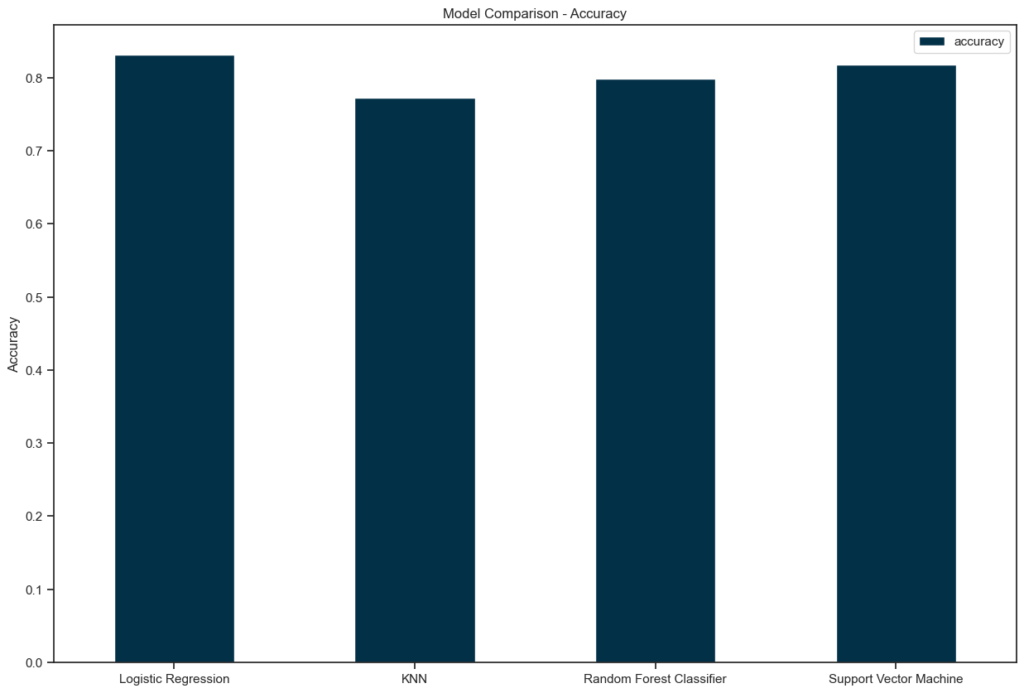Overview
In this project, I developed a machine learning application focused on predicting diabetes risk in patients using health metrics. Utilizing a dataset containing critical health indicators such as glucose levels, BMI, and blood pressure, the objective was to deploy a predictive model aimed at assisting healthcare providers in early diagnosis and personalized patient management.
Methodology
-
Data Collection and Exploration:
- Dataset: I sourced a comprehensive dataset comprising health metrics of individuals, essential for diabetes prediction.
- Exploratory Analysis: I conducted thorough exploratory data analysis (EDA) to understand feature distributions, identify correlations, and visualize data patterns using advanced statistical and graphical methods.
-
Model Development:
- Feature Selection: I utilized all pertinent features except the target variable (‘Outcome’) for training the models.
- Algorithm Selection: I employed Logistic Regression, K-Nearest Neighbors (KNN), Random Forest Classifier, and Support Vector Machine (SVM) for model development, selected for their suitability in classification tasks and interpretability.
- Training and Validation: I split the dataset into training and testing sets to ensure robust model performance metrics.
-
Hyperparameter Tuning:
- Optimization Strategies: I applied RandomizedSearchCV and GridSearchCV techniques to fine-tune model hyperparameters, aiming to enhance predictive accuracy and performance metrics.
-
Model Evaluation:
- Performance Metrics: I evaluated model performance using industry-standard metrics such as accuracy score, precision, recall, and F1-score.
- Confusion Matrix: I analyzed true positives, true negatives, false positives, and false negatives to assess the model’s predictive power.
- ROC Curve and AUC Score: I plotted Receiver Operating Characteristic (ROC) curves to gauge model sensitivity and specificity across various thresholds.
-
Model Deployment and Result:
- Implementation: I deployed the optimized Logistic Regression model using Flask, facilitating seamless integration into real-world healthcare applications.
- Accuracy and Reliability: I achieved an accuracy score of 83.77%, demonstrating the model’s efficacy in predicting diabetes risk based on patient health metrics.
Industry Use Cases
- Healthcare Providers: Empowering healthcare professionals with predictive analytics to enable early intervention and personalized treatment plans for diabetic patients.
- Insurance Sector: Assisting insurers in risk assessment and premium calculation by accurately predicting diabetes risk.
- Wellness Platforms: Integrating predictive models to offer personalized health insights and preventive care recommendations based on individual diabetes risk profiles.
Conclusion
The diabetes prediction project highlights the transformative impact of machine learning in healthcare. By leveraging advanced data analytics and predictive modeling, I developed a robust solution capable of accurately predicting diabetes onset. This initiative enhances patient care and outcomes while supporting proactive health management strategies across various sectors. Moving forward, continuous model refinement and integration of additional data sources will further optimize predictive capabilities, ensuring ongoing improvement and applicability in real-world healthcare scenarios.




















